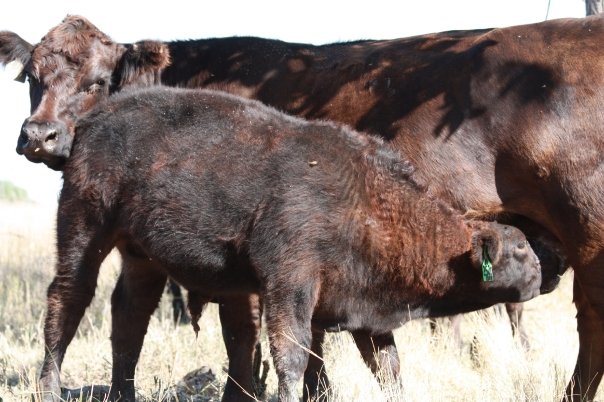Cows with an abundance of milk can certainly support growing calves, but they cost more to feed and have lower rates of fertility, researchers say.
April 2, 2019

Ask a rancher what his or her “dream cow” looks like, and you’ll get a lot of various answers. The cow’s breed, mature weight and genotype may differ depending on the producer’s goals, environment, production practices and marketing strategies.
However, no matter where you live or what your operational goals are, there are a few factors to selecting the ideal cow that I think everyone can agree on — quiet disposition, great milking ability, structural soundness, easy calving and fertility.
It’s this balance of traits, in conjunction with performance markers, that make for that picture-perfect cow we are all seeking.
Yet, sometimes we can get lost in the abundance of data available to us, and it can be tempting to chase a single trait in order to make marked improvements in one specific area.
And that’s where we can get into trouble.
Take, for example, milking ability. We all want cows that have ample milk to grow a calf and put more pounds on her offspring by sale day. However, by chasing one single trait like milk, we may fall trap to overpaying for that particular parameter.
In the case of milk, how much is enough or even too much?
The answer to this question can be found in a recent article written by Travis Mulliniks, University of Nebraska-Lincoln beef cattle nutritionist. “Using maternal genetics, calf weaning weight can have as low as a 5% influence on ranch profitability, due to increasing cowherd production costs. With selection of milk, we are chasing a mere 5% influence on profitability,” he writes.
“On the other hand, the economic value of reproduction is reported to be 5 times greater than calf growth or milk traits. With feed costs, which typically run between 60% to 75% of total annual cow costs, matching cow type or genetic potential to the production environment is and will be more important as the cost of production increases.”
Mulliniks references a study conducted at the University of Tennessee that looked at 37 Angus-bred beef cows and the volume of milk each produced and its correlation to calf performance.
Interestingly, although it should come to no shock to beef producers who have seen high-volume milking cows come up open or late on pregnancy checking date, that fertility decreased in the high milk production cows.
Mulliniks explains, “After milking, cows were classified by their milk production as Low (14 pounds per day), Moderate (20 pounds per day), or High (26 pounds per day) milk cows. Pregnancy rates after artificial insemination was 11% and 13% points lower for High milk cows compared to Moderate and Low cows, respectively.
“The decreased pregnancy rate after artificial insemination in the High milking cows continued through the entire breeding season with High milking cows having the lowest overall pregnancy rates. Milk production level did not increase calf weaning weight. Even with the nearly double milk production from Low to High, calf weaning weights were not different between the three groups.”
According to the article, if milking potential in the cowherd is too high, producers may start seeing several problems that would impact productivity and profitability, including:
Calving distribution starting to spread out from increased number of later breeding cows
Decreased pregnancy rates in young (2- and 3-year-old) cows
Decreased stocking rates over the years than previously stocked
Increased number of thinner body condition score cows and/or increased feed amounts to maintain adequate body condition score.
You can read additional information of research conducted at UNL by clicking here.
It can be easy to think that “more is better” and “bigger is better.” However, if we fall into that mentality, we may lose sight of the importance of balance for achieving long-term success in our cow-calf operations.
The opinions of Amanda Radke are not necessarily those of beefmagazine.com or Farm Progress.
About the Author(s)
You May Also Like





